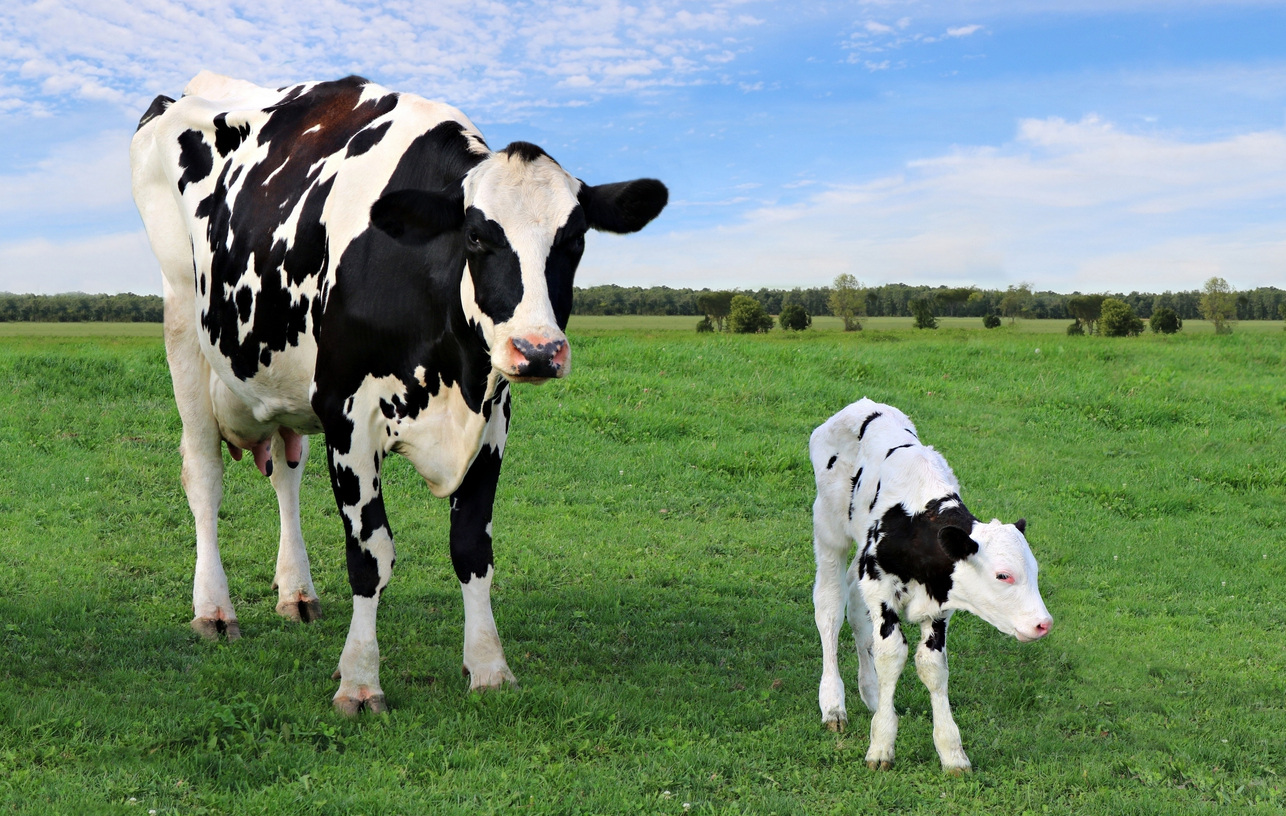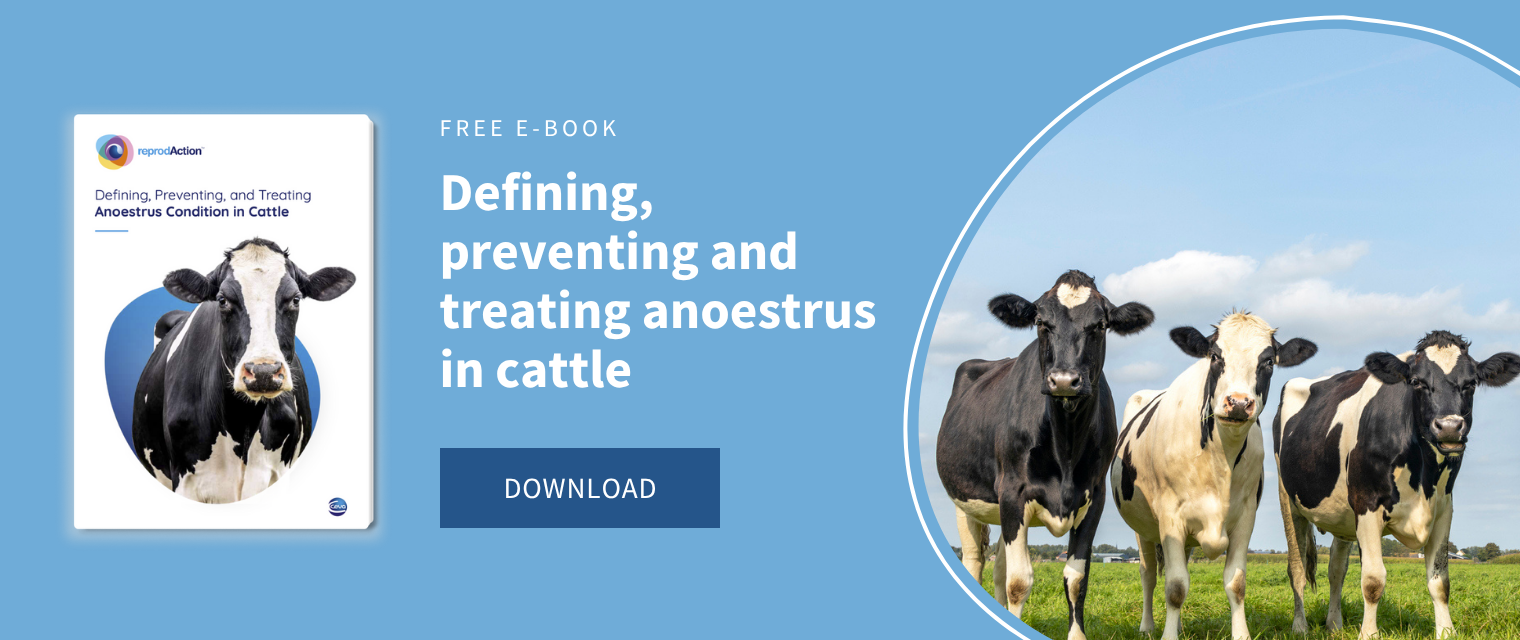The profitability of a dairy cattle farm is strongly conditioned by the reproductive efficiency of the cows. To achieve the maximum possible profit, cows must be in perfect health, trying to minimize the appearance of diseases that can reduce their productivity. Thus, one of the most critical periods in the life of these animals is the postpartum period, when a series of physical and metabolic changes that will pose a challenge to their recovery take place.
Prefer to listen to this article? Click the play button below and enjoy our podcast!
In this sense, the animal undergoes a transition from the pregnant to the lactating state, with the consequent loss of body condition and negative energy balance. In these circumstances, the cow must be able to recover its physiological state before gestation, managing to complete uterine involution and restart its cyclical ovarian activity in an optimal period to be inseminated, all while maintaining adequate milk production.
Delivery of the detached placenta
Under normal conditions, the placenta should be delivered within 8-12 hours after birth. In cattle, the placenta is characterized by formations called placentomes, which result from the development and union of the cotyledons (fetal part) and the uterine caruncles (maternal part). For the placenta to detach properly, a series of changes must occur, starting already during the last phase of gestation. These changes include the maturation of the placentomes and structural, endocrine and immunological modifications.

Endocrine changes include activation of the hypothalamic-pituitary-adrenal axis due to fetal stressors such as reduced space, hypoxia, and variations in blood pressure. The consequent release of cortisol leads to the production of PGF2α, which triggers luteolysis and initiates myometrial contractions. In addition, cortisol regulates hormone metabolism, so that progesterone levels decrease, and estrogen levels increase. Furthermore, when the fetus enters the birth canal, Ferguson's reflex occurs, triggering an abrupt release of oxytocin and causing myometrial contraction. This causes vascular changes in the placentomes, alternating between a hyperemic and ischemic state. Additionally, the opening of the cervix is controlled by the relaxin.
Apart from hormonal changes, several changes also take place at the cellular level. During maturation and placental separation, the mother's immune system is activated and, in the seventh month of gestation, the expression of the major histocompatibility complex class I and an increase in chemotaxis and inflammatory cell activity occur. Moreover, the degradation of certain components of the extracellular matrix, such as collagen, in which matrix-metalloproteinase enzymes are involved, is also important.
However, if after 24 h fetal membranes are still present in the genital tract, it is considered a retained placenta. Apart from its effects on milk production, this pathology favors the occurrence of other uterine diseases that impair uterine involution and resumption of ovarian cyclicity, such as metritis and endometritis1, consequently decreasing reproductive efficiency.
Uterine involution and recovery of ovarian cyclicity
After calving, the uterus must involute and return to its pre-pregnancy physiological state. This requires two events to take place: a decrease in size and regeneration of the endometrium.
This involution is due to contractions of the myometrium, replacement of the extracellular matrix, necrosis and regeneration of the uterine caruncles. In general terms, this process is estimated to last 3-4 weeks and is necessary for good fertility.
At the ovarian level, hormonal balance needs to be restored for the cow to become cyclical again. A few days after calving, the concentration of steroid hormones decreases to basal levels, and the concentration of FSH increases2. The first dominant follicle appears about 10 days after calving, and can have 3 fates:
- Ovulation and formation of a CL
- Atresia and emergence of a second wave.
- Persistence as an ovarian cyst
The fate depends on the frequency of the LH pulses, being the lack of ovulation a consequence of an inadequate frequency of LH pulses and low estradiol concentrations. In this regard, postpartum anestrus can be defined as the lack of estrus symptoms within a certain period after calving, while normal cows in exactly the same conditions already have been seen in heat3. Instead of a disease, it should be considered a sign or a symptom of suboptimal or pathological conditions involving limited energy intake, lower body condition and diseases of the reproductive tract. There is a general agreement that, in dairy cows, regular estrous cycles should appear within 6 weeks after calving, and the anestrus period after calving should not exceed 60 days.

Furthermore, it should be noted that the intensity and duration of estrus behaviors during the estrus cycle can vary among individuals4. The manifestation of estrus and its detection may be influenced by several factors, including:
- Social interactions: larger, dominant cows might inhibit the mounting activity of smaller, subordinate animals.
- Management of the farm: the effectiveness and precision of direct observation as an estrus detection technique are influenced by the frequency, duration, and timing of the observation periods.
- Environmental factors: season, weather, day length, temperature and photoperiod can influence the sexual receptivity and reproductive efficiency of cattle.
- Nutrition: malnutrition or specific nutrient deficiencies may interfere with or inhibit estrous behaviors.
- Genetic factors: category (dairy and beef) and breed differences exist with respect to estrous duration and the intensity of estrous behaviors.
Good oocyte quality for fertility success
Apart from recovering its cyclical activity, the cow must produce oocytes of sufficient quality in order to get pregnant. In this regard, the steroid hormone progesterone plays a key role. Very low progesterone concentrations (1-2 ng/mL) are associated with increased LH pulse frequency, although not enough to induce ovulation. Therefore, it may lead to an extended period of dominance (persistence) of the dominant follicle, which decreases the pregnancy rate.
Conclusion
Uterine involution and recovery of ovarian cyclicity are two key points in the postpartum period. The correct detachment of the placenta, reduction in size and endometrial regeneration of the uterus, and resumption of ovulation in due time are fundamental processes to maintain reproductive efficiency in dairy farms. However, the occurrence of postpartum diseases, inappropriate management practices or inadequate nutritional state are important factors that negatively influence the proper recovery of the reproductive tract after calving.
References
1. Sheldon I.M., Owens S.E. (2017) Postpartum uterine infection and endometritis in dairy cattle. Animal Reproduction, 14, 622-629. http://dx.doi.org/10.21451/1984-3143-AR1006
2. Roche J.F., Mackey D., Diskin M.D. (2000) Reproductive management of postpartum cows. Animal Reproduction Science, 60-61, 703-712. https://doi.org/10.1016/S0378-4320(00)00107-X
3. Opsomer G., Mijten P., Coryn M., de Kruif, A. (2011) Post-partum anoestrus in dairy cows: a review. Veterinary Quarterly, 18, 68-75. https://doi.org/10.1080/01652176.1996.9694620
4. Orihuela A. (2000) Some factors affecting the behavioural manifestation of oestrus in cattle: a review. Applied Animal Behaviour Science, 70, 1-16. https://doi.org/10.1016/S0168-1591(00)00139-8
About the author
Federico Randi (Ruminants Global Technical Manager)
Federico Randi is Global Technical Manager for Ruminants at Ceva Animal Health, specializing in cattle reproduction. With a Doctor of Veterinary Medicine degree “cum laude” from the University of Bologna, he focused his career on improving efficiency and sustainability of farmed animals. Randi conducts research on ruminants fertility, using technologies like Timed AI, embryo transfer, and recombinant technologies. His extensive experience includes collaborative projects with over 20 research institutions globally. He earned his PhD at University College Dublin, concentrating on fixed-time artificial insemination and embryonic maternal communication in cattle. Currently, he serves as a Board Member in the Scientific Commission of Animal Physiology for the European Federation of Animal Science (EAAP) as an Industry Representative.
About the author
Uxía Yáñez (Predoctoral Fellow)
Assistant Researcher, Universidade de Santiago de Compostela (USC). PhD in Veterinary Medicine and Health by at USC in 2023. Her research activity is focused on ultrasonography and its applications in the reproductive management of dairy cattle, as well as the influence of peripartum diseases on the profitability of the farms. Additionally, her work involves practical teaching sessions about cattle reproduction at the Faculty of Veterinary Medicine in Lugo (Galicia, Spain).
About the author
Luis A. Quintela (Senior Lecturer in Animal Reproduction)
Professor in the Department of Animal Pathology at the Veterinary Faculty in Lugo, Unvidersidade de Santiago de Compostela (USC). Graduate with a DVM in 1989 and PhD in Veterinary Science in 1996 at the USC. Teaching reproduction and obstetrics, veterinary clinical ultrasound and dairy cattle medicine for graduate and MA students. Adviser in reproduction for a pharmaceutical company since 2007. In the field of investigation, he has participated in and directed several research projects and collaborated with I+D+I programs of several pharmaceutical companies. He has more than one hundred articles of investigation and divulgation and more than one hundred thirty meeting abstracts in national and international congress, he has eight books or book chapters, and he has a patent in exploitation. Most of his works were developed in the field of reproduction in cattle.




Leave your comments here